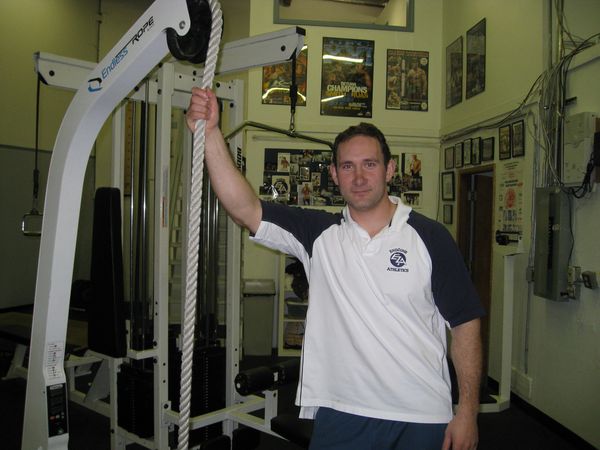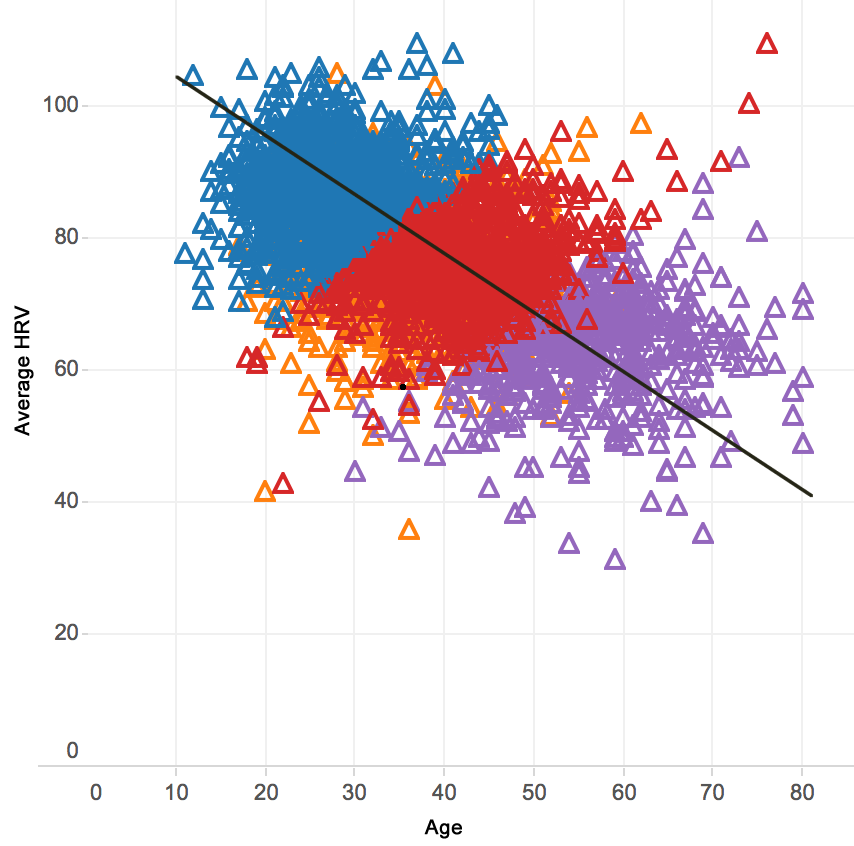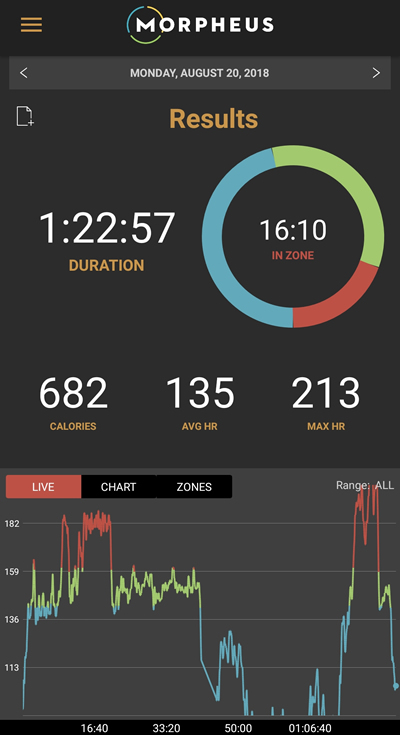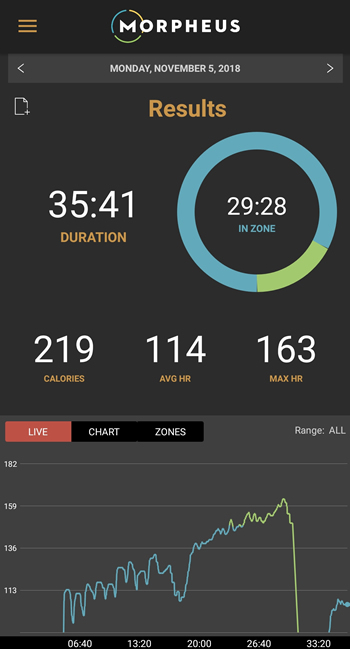
When I was in middle school, I used to walk to the local bookstore and pick up the latest copy of FLEX magazine every month without fail. I was a teenager, so my motivation was pretty simple: I wanted to learn how to get big arms and six pack abs to impress the girls.
I don’t think I even knew what the word “conditioning” meant. My bodybuilding magazines talked about doing fasted cardio to get lean, so that’s all I did.
My first real introduction to conditioning for performance
As I grew up and started studying strength & conditioning in college, I realized there was another world of training that I knew nothing about.
I remember the first time I saw a collegiate football strength and conditioning program at the University of Washington. The training days weren’t broken up by body part, like I was used to. The exact same lifts were being done three, even four, days a week. There were all kinds of conditioning drills and exercises I had never seen in FLEX magazine.
I was lost.
This was my first real introduction to the idea of conditioning for performance.
I have to admit that I still spent a lot more time studying strength than I did conditioning. But, while I didn’t really understand energy systems or conditioning, at least I knew it was a real part of training.
When I opened my gym in 2003 and quickly started training fighters, my real conditioning education began. I was forced to dive head-first into everything I could find about conditioning, because I didn’t want to be the reason one of my athletes lost a fight.
The only thing that matters is winning
There’s no second place in MMA, only a winner and a loser.
So, for the next ten years, I focused almost exclusively on training athletes and understanding conditioning. I started 8WeeksOut, wrote Ultimate MMA Conditioning, and created BioForce HRV. Almost everything I studied, practiced and preached revolved around one thing: performance.
It wasn’t until my mom suffered a stroke (I wrote about that here) and I started to get old (or at least older) that my perspective started to change. I realized that while I loved helping athletes get in competition shape—and I was good at it—I needed to use conditioning for something even more important: helping my clients stay alive.
On a personal level, I also knew that I was screwed by the genetic lottery. Both sides of my family have a strong history of major heart problems and dying young.
I didn’t think much about it when I was in my 20’s. That changed as I got older and watched family members fall apart. I knew I didn’t want to be next.

A much younger version of me (repping my new gym’s logo on a sweet polo).
My plan to cheat death… or at least die trying
We’ll all die sooner or later, but I’m determined to use conditioning to make that much later, rather than sooner. And just as importantly, to make sure I stay healthy enough to enjoy my life while it lasts.
I had no idea that conditioning was so important when I was younger. It’s not just for burning fat, improving performance, or fighting back against the ticking clock of time.
It’s about all three. Conditioning has many faces.
But the key is that each goal requires a different conditioning strategy. If you want to look like a bodybuilder, you train like one. If you want to be as strong as a powerlifter, you lift like one.
Conditioning is the same way. If your goal is to maximize your lifespan and stay healthy, you shouldn’t use the same conditioning strategies as a fighter preparing to step in the cage.
I teach how to build conditioning programs around each of these goals in my BioForce Conditioning Coach Certification (which you can learn more about here), but to give you an example of what I mean, I want to share “the big 3” conditioning strategies that I follow myself.
#1 Use HRV on a daily basis to track your improvements (or lack thereof) in conditioning.
It’s easy to know if you’re getting stronger or not. The weights either go up, or they don’t.
Conditioning isn’t always so obvious. This is especially true if you—like me, these days—are just training to stay alive as long as possible.
How do you really know if your conditioning is good enough or not? Or if your program is actually making it better?
To get a good answer, you could go to a lab every month and spend a bunch of time/money testing things like VO2max and lactate threshold… Or, you could spend a few minutes each day monitoring your heart rate variability (HRV). It’s a pretty easy choice.
I first started using HRV almost 20 years ago, long before most people had ever heard of it.
Since then, I’ve created two HRV apps and used them with everyone I’ve trained. It’s by far the closest way to see “if the weights are going up or not” when it comes to conditioning.
Your HRV is either increasing over time—meaning your conditioning is getting better—or it’s not. For health purposes, there’s also a ton of research correlating higher HRV with better longevity.
As you age, your HRV naturally declines (and this is a bad thing). It means you’re more susceptible to a range of health problems, and your risk of dying from things like cardiovascular disease, stroke, and even cancer goes up.
You can see this decline clearly in the graph below, which shows over 1.5 million HRV measurements collected using my older HRV system, BioForce HRV:

The colors you see represent three categories of people: those with high average HRV (in blue), moderate HRV (in red) and low HRV (in purple). The people with higher HRV values tend to be much younger than those with lower values. The trend line down the middle tells the same story: HRV decreases with age.
But you’re not entirely off the hook. Even though your HRV will decline as you age, you have complete control over how slowly this happens. Take 40 year-olds, for example: you can see that people had average HRV values as low as 60 or as high as the mid-80’s.
That’s a massive difference. It means that a 40 year-old can have the same HRV as the average 20 year-old, if they do everything right.
I use my own HRV system, Morpheus (which you can learn more here), and I try to keep my HRV at least in the low 80’s. I know if I can keep it there, my risk of cardiovascular disease and stroke are much lower.
If you don’t know how to increase your HRV, you can check out my article on 5 Tips to Increase Your HRV.
#2 Make conditioning fun—or you won’t do it.
When I’m training an athlete, I’m not too worried about making their conditioning workouts fun. I care about making them effective. (I’ll be honest, most of them are not fun.)
Training for performance isn’t about enjoyment. It’s about winning. Nobody says, “Well, at least we had fun at practice,” after they lose a game.
Training to win often means doing the same things over, and over and over again. It can quickly get monotonous.
But, when it comes to conditioning for health and longevity, people (including you) won’t do it unless it’s fun. There is no fear of losing. Most people lose interest —and quit—after doing the same things over and over.
This is particularly true when it comes to doing cardio. It doesn’t matter how effective a program is if you quit because it’s boring as all hell.
That’s why my most of my conditioning comes from doing things I actually enjoy: riding my mountain bike and playing racquetball. I don’t have to exert any willpower to get myself to do them.
I still vary my volume and intensity to get the most out of these activities within my overall program. For my cardiac output work, I can go on longer, slower bike rides. Or, I can ride uphill slowly to get in some HICT. I can practice my technique at lower intensities on the racquetball court, or I can play games competitively to drive my heart rate up.
This makes my conditioning both fun and effective.

If you want to improve someone’s conditioning long term, you have to help them find activities they enjoy.
Most average people consistently train with me for only two or three days a week. Conditioning to stay alive and be healthy takes more than that.
If you’re a coach or trainer, that’s why it’s so important to help people find a conditioning activity they A.) can do on their own, and B.) have fun doing.
From there, you can help them use tools like Morpheus to track their heart rates and train at the right intensities to make those activities not just fun, but as effective as possible, too.
#3 Alternate high-intensity training with recovery workouts (Rebound Training)
When you’re young, you can usually get away with smashing yourself into the ground more often than you should. The hormones of youth that drive recovery like testosterone and growth hormone are powerful.
As you get older and these hormones decline, your body doesn’t work the same way anymore. You can’t do the same things you used to without paying the price.
After spending a few years experimenting with all kinds of different weekly periodization models, I found a very simple strategy to counteract this. The strategy is to follow a high-intensity session with one aimed at recovery. Avoid back-to-back high-intensity conditioning days as much as possible.
How do I define “high intensity,” exactly?
When it comes to conditioning, I’d classify any workout where your heart rate gets up to 90% of your max as a high-intensity session. If you use Morpheus, any workout where your heart rate gets into the red zone and your recovery decreases by more than 15% is definitely high intensity.
Personally, I do about two of these high-intensity conditioning workouts per week—usually on Tuesdays and Fridays. For most people who aren’t professional athletes, two per week is the right amount. More than this is rarely better. Often, it’s worse.
To speed up recovery, I follow each high-intensity workout with what I call Rebound Training. This is a specific type of workout that I’ve written about extensively before.
The goal of these workouts is to stimulate recovery rather than fatigue. If you want to see exactly what I do and download a free Rebound Training template, click here.
Over the past few months, I’ve also started incorporating more body tempering with the IASTM tools from Kabuki Strength. I’ve found this to be a tremendously effective way to keep my soft tissues and joints healthy.
You can see quick example of one of these regeneration methods by watching a short video on the Ultimate 5-minute Regeneration Method with Kabuki.
This approach of alternating high-intensity conditioning (while doing things I enjoy) with recovery-driven training and regeneration flat out works. I feel great. My joints don’t hurt and I can’t remember the last time I missed a workout because of an injury.
Most importantly, my conditioning and HRV are exactly where they need to be for my ultimate goal: cheat death (and stay healthy) as long as possible.
Sooner or later, I’ll to lose the race against time. But for now, I’m still ahead of the game and enjoying every minute of it.
What to do next
If have the same goal as me, to live a longer, healthier life, start by evaluating your own conditioning level and plan. Are you using HRV or some other means of tracking your conditioning? Do you enjoy your training? Do you do a good job of not overdoing the intensity?
If the answer to all of these is “yes” then keep it up. If it’s “no” then take a step back and consider making some changes. It’s worth the effort. In the long run, getting your conditioning program right is about more than winning and losing. It’s about staying alive.
If you’re a coach or trainer and want to dive deep into conditioning and learn how to create not just game-changing, but life-changing, conditioning programs, make sure to get on the Insider’s List for my BioForce Conditioning Certification below. You’ll save $200 off the registration price when the cert opens next in November.


